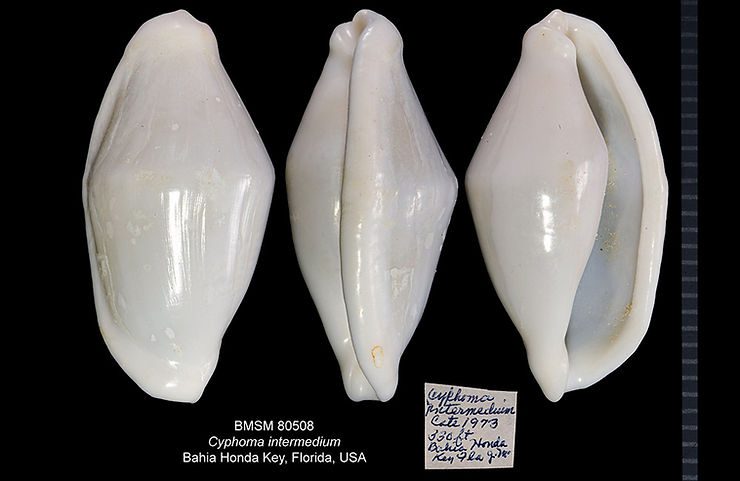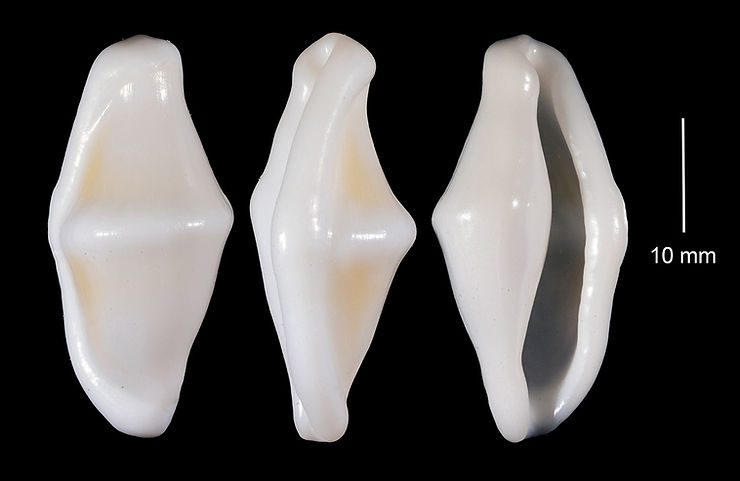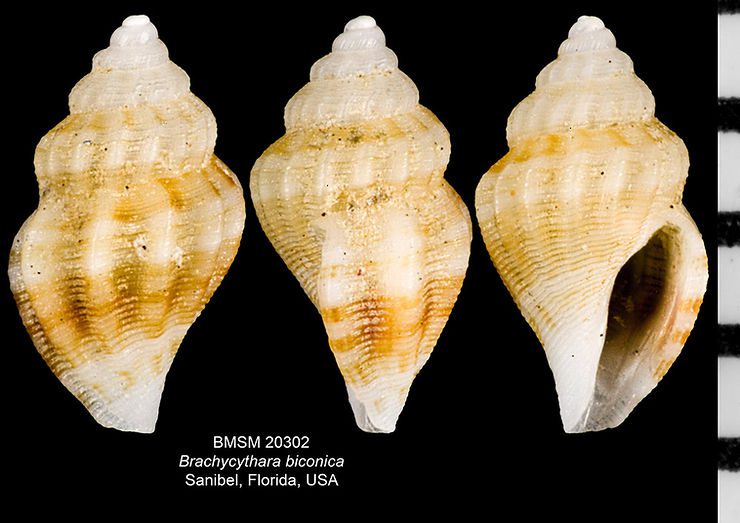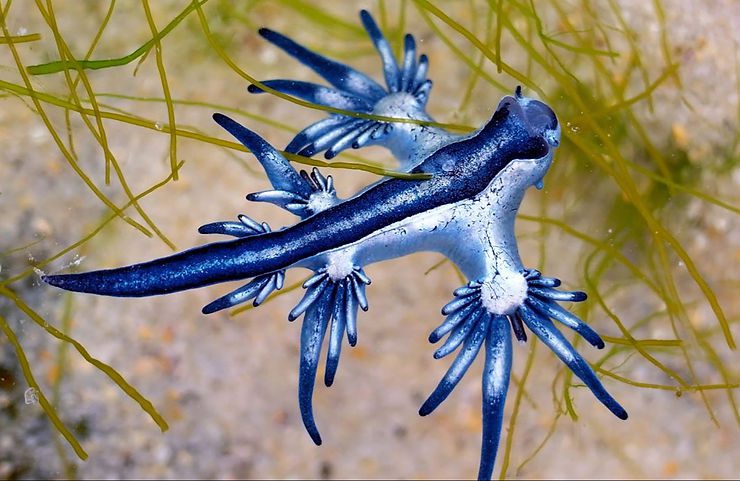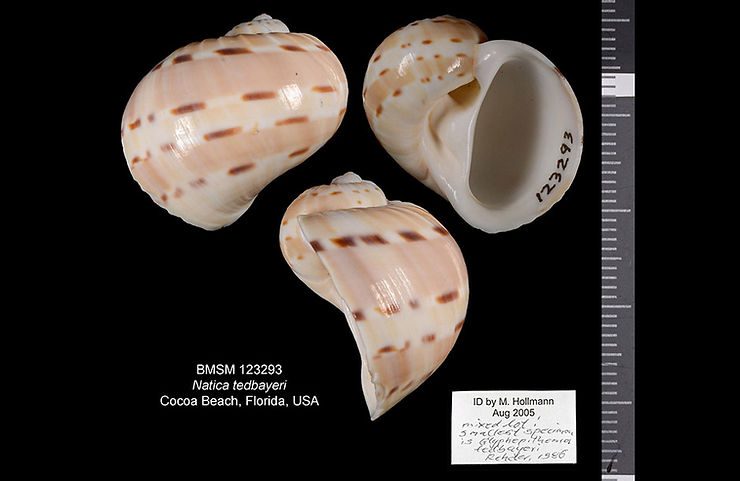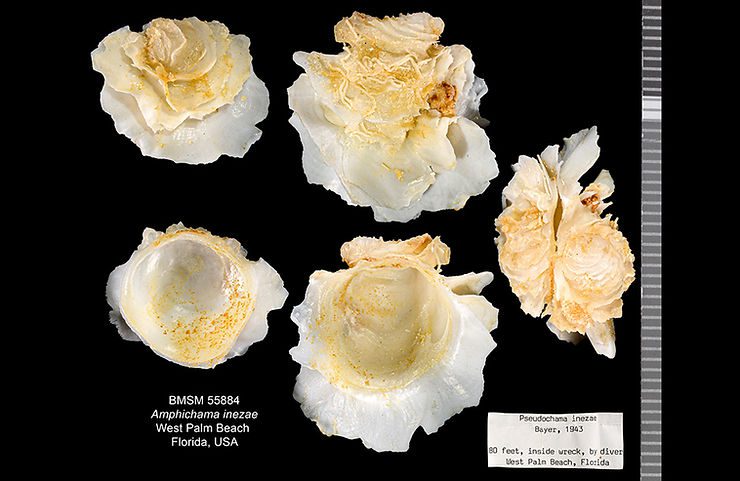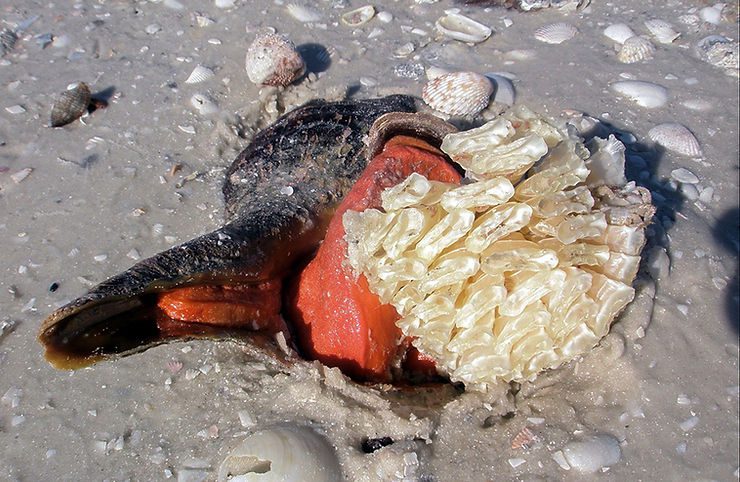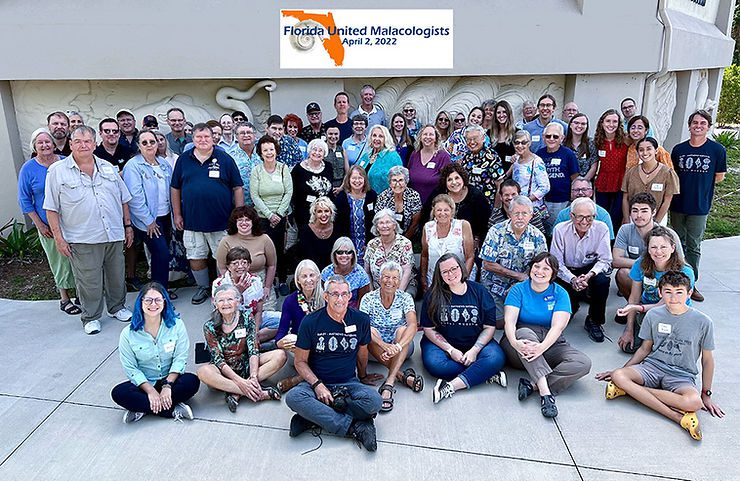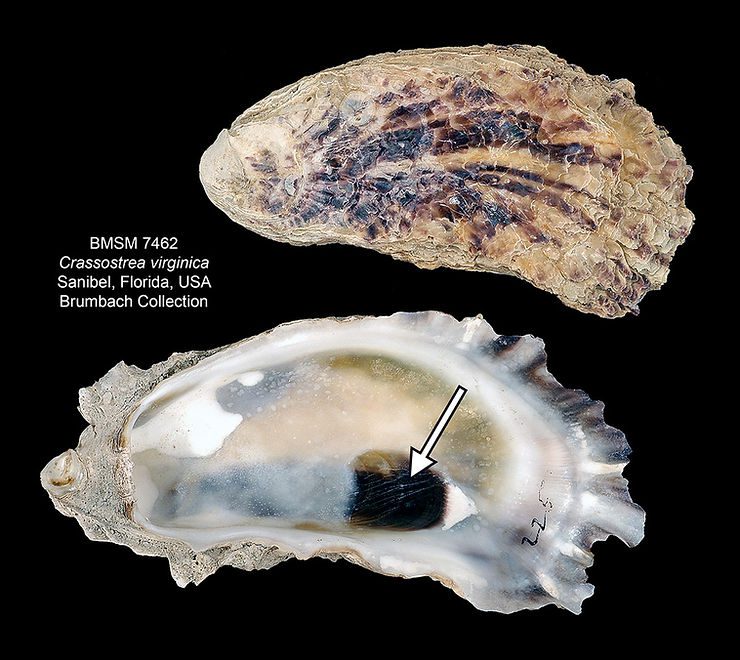
That Dark Spot in the Eastern Oyster
If you look inside the valve (half-shell) of an Eastern Oyster, Crassostrea virginica, you'll see a large, dark spot (arrows) “engraved” on each half-shell, or valve. That spot is known as a muscle scar, and marks the place where the adductor muscle of the living animal attaches to the inside of each valve. The adductor muscles are used by bivalves such as oysters and clams to close their shells, and to keep them closed for long periods of time. The adductor muscle in oysters is divided into a “
